There are several types of Argiope spiders which live in different countries. They are not considered a dangerous spider but are venomous like all spiders.
The Black and Yellow Argiopes (Argiope Aurantia) are commonly found in the United States in the Summer months. They are often called “writing” spiders because of the zigzag stablimentum which characterise their web.
This lovely spider only has a short life span and once she has produced one or more (usually no more than 3) brown, papery egg sacs, she will die. The egg sacs are roughly round in shape and up to 25 mm in diameter; each contains 300 to 1400 eggs. She attaches her egg sacs to one side of her web, close to her resting position at the centre. Each female will watch over her eggs as long as she can, but will die in the first hard frost, if not before. The eggs hatch in Autumn ( fall), but spiderlings stay in the sac during winter and emerge in spring. (Milne and Milne 1980,Heiber 1992, Faulkner 1999).
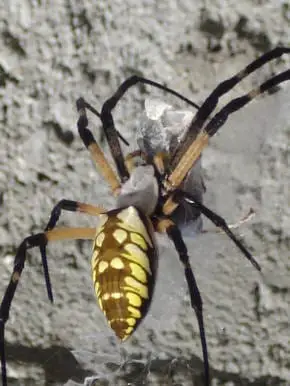
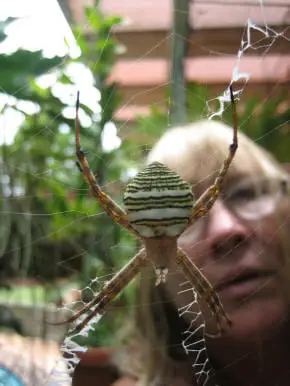
The Australian variety below is the St Andrews Cross Spider, (Argiope mangal.) The St Andrew’s Cross Spider doesn’t have dangerous venom. Its bite causes a mild local pain.
These spiders get their name for the way their hold their eight legs in pairs to form an X shape like the St Andrews Cross on our national flag.
Argiope Lobata, on the first of the next two images, are located around the Mediterranean and is a very common species in the Iberian Peninsula and is frequently found in zones of high grass, as well as in little dense matos, in which it constructs its web.
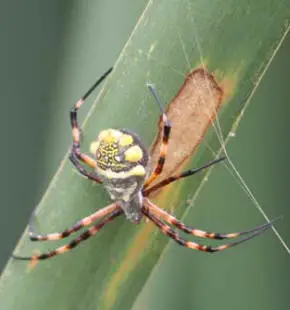
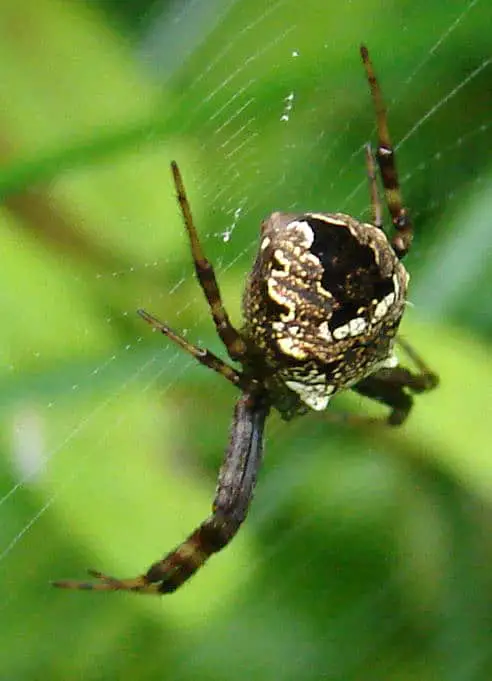
Gea Hepatgon, above, is a small spider, averaging about ¼ inch in length. It has no common name. Webs are built vertically, but close to the ground, and are only a few inches across. They can sometimes be seen in the clover fern (Marsilea macropodia) that functions as groundcover in sections of the garden.
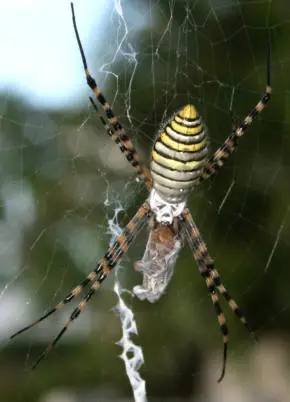
The largest and most striking of the argiope spiders is the Banded Argiope spider (Argiope trifasciata) above. It is found in late summer and early fall among shrubbery and in gardens where they make a highly symmetrical orb web. Females are generally silvery, with dark and yellow striping. Males are rarely observed and are much smaller than the females. The banded garden spider is harmless.
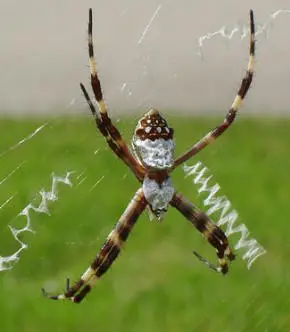
Silver Argiopes (Argiope argentata): This spider is one of nature’s many pest control agents. Its appetite for insects results in its keeping many burgeoning insect populations in check. As a group, orb-weaving spiders consume many tonnes of insects every year. You can find silver argiopes among shrubbery, tall plants and flowers in meadows and gardens. They weave a distinctive zigzag pattern within their web – an easy way to identify the presence of this particular species. They are not considered dangerous to humans although like all spiders can bite.
Click here and here for more photos of Argiopes.
Information and pictures were taken from children’s projects and where credited to that child does not claim to be original information. Where possible, permission to reproduce has been sought. Any infringement of copyright is purely unintentional.
